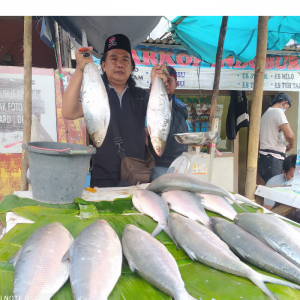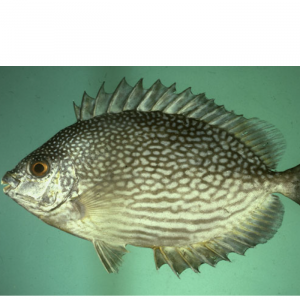
Gut Instinct
| Wed, 15 Apr 2020 - 14:47
Microbiome scientists at Nofima are working on uncovering the complex cross-talk between the fish and its microbes and aim to improve the health of farmed fish.
Microbiome: an organ in its own right
The hundreds of trillions of microbes that reside on and within animals, including fish, are collectively referred to as the microbiota. These complex microbial communities, which interact with each other, the host and the host’s environment, are called the microbiome.
At Nofima, I work with a group of scientists who are collaborating to explore the influence of the microbiome, associated with its dietary effects in aquaculture. Currently, our research is focusing on investigating the effects of the microbiome on system performance.
Why should we study the fish microbiome?
The highly complex and mixed microbial population which lives in the intestine of animals is known as the gut microbiota. A stable and resilient microbiome is linked to maintaining the overall health and well‐being of the host. Many efforts have already been directed to understand the interactions between host and microbe, as well as between microbes themselves, in humans and other terrestrial animals. Now we know that gut microbiota plays a crucial role in supporting the host’s intestinal stability as well as metabolic and immune functions. As with humans and other animals, the gut microbial communities of lower vertebrates such as fish can also contribute to maintaining the host organism’s immune equilibrium, digestion and nutrition.
The fish microbiota is diverse and includes protists, bacteria, archaea, fungi and viruses. It is shaped by several host-associated factors – such as diet, age, geographical location, stress, genetics and drugs. Among the microbial communities in a fish’s gut, bacteria are the most abundant and dominant microorganisms. They maintain an intimate relationship with the gut mucosa (the inner lining of the gastrointestinal tract) and impart substantial functions in a healthy individual – they co-exist to contribute, among many functions, to the production of vitamins, synthesis of amino acids and production of bacterial metabolites.
Nofima’s strategy to investigate the fish microbiome
Many aspects of fish microbiome research are still something of a black box, as researchers remain uncertain about how, when and where the fish acquires its microbiota. We need this information in order to maximise the potential of this new field in aquaculture. Microbiome research is inherently interdisciplinary and Nofima has a special advantage since its work ecompasses disciplines such as fish health, nutrition, genetics, production biology and food processing – all of which can collaborate in opening up the black box.
The majority of previous studies have focused upon the structure of the fish microbiome, providing little knowledge about the immense functional potential of the gut microbiome. At Nofima, some of our objectives are to understand and study how the microbiome cooperatively functions as communities in different rearing environments (eg its effect on biofilter activity) and how it interacts with the host tissue (that is, its role in nutrient conversion, health and disease). Furthermore, we aim to pinpoint key functionalities of these microbes in the host, which could be of great value for the future development of the aquaculture sector. In addition, fish diseases are one of the largest challenges in aquaculture production, and, as a sector, when we commit to addressing them, our highest priority tends to be working to identify the single pathogenic microbe causing the disease. At Nofima, by contrast, we challenge the status quo to identify the rest of the microbiota and determine if they can confer some resistance to the pathogen.
In the face of rapidly progressive deterioration of skin health, studies aim to get a deeper understanding of the role of the microbiome and the mechanisms of disease resistance. In recent years, dietary studies have shown that variation in microbiome composition is mainly driven by certain bacteria, but these types of bacteria are not always the same between studies. At the same time, changes are also seen to occur in circumstances where there is a high level of connectivity to external microbiomes (eg contact with varied microbes from the surrounding water or from other fish living in the same tank). A limitation is that we have not yet measured absolute microbial cell numbers in the intestine. Investigations into defining underlying mechanisms of host-microbe interactions are currently being developed at Nofima.
In general, most anaerobic bacteria residing in the gut have incredible capacities for fermenting non-digestible complex substrates, and this fermentation produces bacterial metabolites such as short-chain fatty acids (SCFAs) and gases. Acetate, butyrate and propionate are the major SCFAs that are most widely studied. These SCFAs have been the focus of attention due to their well-documented beneficial effects on the health of the intestinal tract in humans and farmed animals. However, we have limited information on the functional aspects of these SCFAs in fish, even though this knowledge could have applications in improving the health of the farmed fish species.

A graphic representation of the production of short-chain fatty acids (SCFAs) by the good microbes in the fish gut. Illustrated by Shruti Gupta. The good or commensal microbes which live in the fish gut, ferment the complex substrates from the feed and produce bacterial metabolites and gases. Microbiome scientists at Nofima are investigating the functional potential of major SCFAs in the fish gut and aim to produce a healthier fish
© Dr Shruti Gupta
Scientists at Nofima are working towards understanding the interconnection between the fish and its gut microbes using new molecular techniques such as next-generation sequencing and chromatography techniques such as gas chromatography. From our previous experiments, we have found that Atlantic salmon smolts, when transferred to the sea, alter their microbiome depending on the season and location. Furthermore, our results suggest that the concentration of major SCFAs modifies, depending on the dietary patterns. We are now working towards understanding the cross-talk between the major SCFAs and the fish.
We are also conducting one of the largest microbial surveys of the Atlantic salmon skin and gut microbiomes, contrasting different life stages of wild and farmed salmon across the northern hemisphere. The goal is to investigate what triggers the changes in microbiota and to determine which microbes are necessary for the health of the host and which ones are just along for the ride. Research at Nofima is also focusing on the triggers and switches which influence the microbiota of farmed fish.
Furthermore, this year we hope to reveal new insights on the gut host-microbiota relationships from our prime researchers employed in gain-of-function dietary gut microbiome studies. The researchers will also continue to investigate how the act of feeding may influence microbiome composition and function through diverse mechanisms in both host and system performance.
The key takeaways from our ongoing research are that one should understand, that for every fish we feed today, we also feed trillions of other microorganisms. Therefore, to establish and maintain a healthy fish gut microbiome, a fundamental understanding of the diversity and compositional profile of the fish-associated microbial communities and their impact on growth and health is essential.
With the development of new sequencing technologies, the research on fish gut microbiota has expanded dramatically. Nevertheless, information regarding the functions of fish gut microbiota and the cross-talk between the bacterial metabolites and fish should be in the research spotlight, in order to develop effective strategies to keep pathogens at bay and to improve the growth and health of farmed fish species.
Source: The Fish Site






















